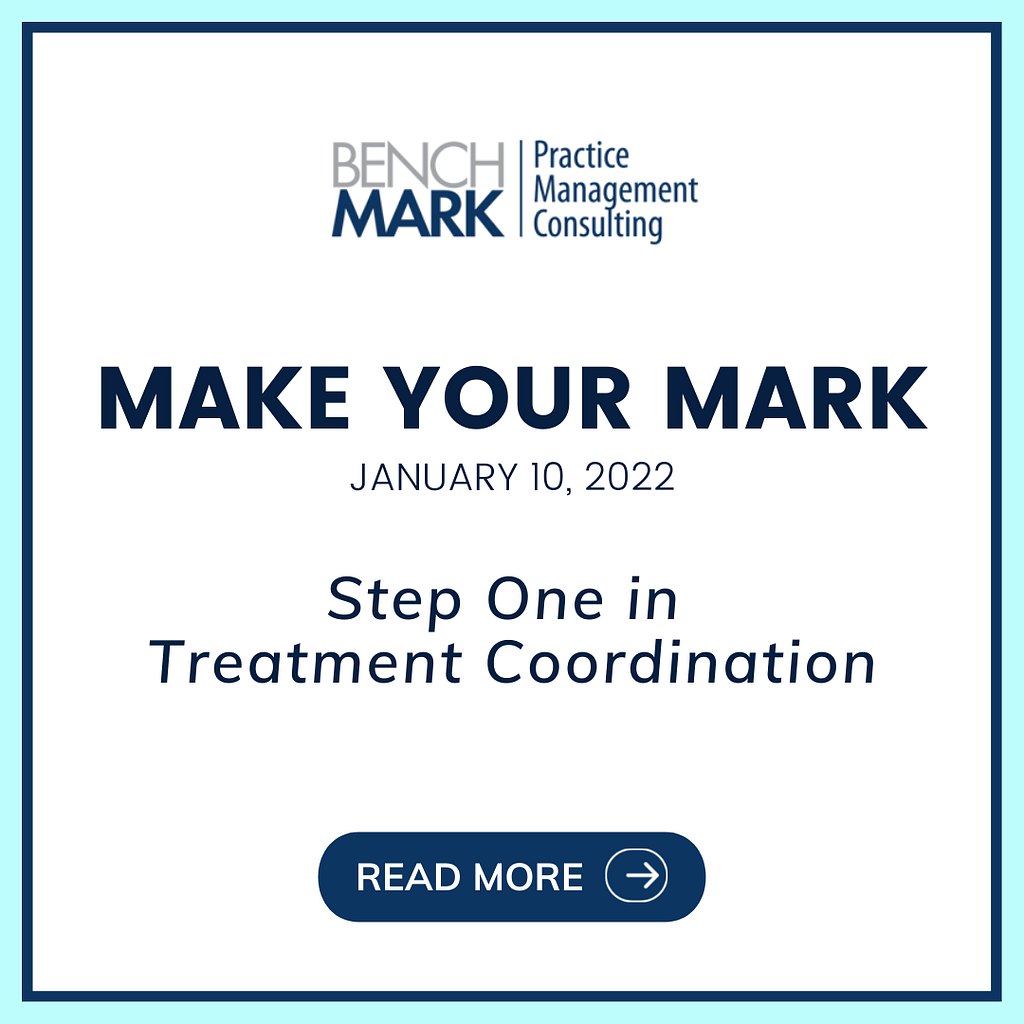Most dental offices are going to be finding that they are fighting two nasty dragons this year. COVID-19 is raising its ugly head again but more importantly, the rapid rate of inflation will be affecting all patients, causing less disposable dental income for treatment that is diagnosed. This is a real problem for many patients, if their everyday bills are increasing by 10 to 15 percent, they may not be able to go ahead with some dental procedures. Your office methods of treatment presentation and treatment follow-up will need to be fine-tuned for patients to be able to see the value of the diagnosis.
This is part one in a four-part series to ensure that the treatment that you diagnose gets booked in your practice in a timely manner. The goal for treatment acceptance is 80% booking the first-time treatment is diagnosed. This metric should be measured in a physical way, not by a gut feeling. If your office isn’t attaining this metric then you need to make sure it is because of a lack of disposable income presently, not because of a lack of treatment coordination in your office.
In Part One of this series there are tips on what needs to happen chairside to start the process off on the right foot:
- At your morning huddle (or preferably day before huddle) be sure that your team has audited their charts to discuss any outstanding treatment or any areas that my have been under “watch” from last visit. This will allow the hygienist to start having a discussion about any problem areas during the hygiene appointment prior to the recall exam.
- Ensure that you and your team all deliver verbiage in the same way, no matter who speaks about a diagnosed treatment the patient should be hearing the same description repeatedly.
- When you start speaking with a patient about diagnosed work whether you are in a hygiene room or a dentist’s room, the patient should be brought into an upright sitting position. Your chair should be pushed back so that you are sitting “knee to knee” with the patient and can look at them in the eye. Educating a patient when they are lying down is difficult for both the dentist and the hygienist.
- When educating the patient about a diagnosis ensure that you have intra oral pictures that you can show them so that they can see their mouth the way that you see it. Also have models handy in the room so that the patient can visualize what the treatment may look like in their mouth.
- Don’t just push through a description of treatment without taking a breath. You may have used the same words hundreds of times, but it may be the first time that this patient is actually hearing them. Take breaks during educating your patient and ask along the way “does this make sense to you?”
- Watch the body language of the patient while you are speaking, if you can see that their eyes have glazed over or their arms have crossed you may want to change your approach.
- Once you have delivered your education to the patient, answered any questions and have left the room, have the assistant or hygienist ask if there are any questions they may have. Many patients will be afraid to ask what they think is a stupid question in front of the dentist but are willing to ask the question of the assistant or hygienist.
There are some very bad habits that happen when treatment diagnosis is being delivered chairside that everyone should avoid:
- Don’t deliver a treatment diagnosis and then promptly say, “Let’s see what your insurance covers.” This perpetuates the patient mindset that they only need to go ahead if they have insurance coverage.
- Don’t make financial arrangements or have financial discussions chairside with patients.
As we have all found life has changed once again, sharpening up your team’s skills will help ride the current bumps of inflation and Covid that we are all experiencing. Part Two of this series will discuss what needs to happen after a patient leaves a treatment room with diagnosed treatment.




